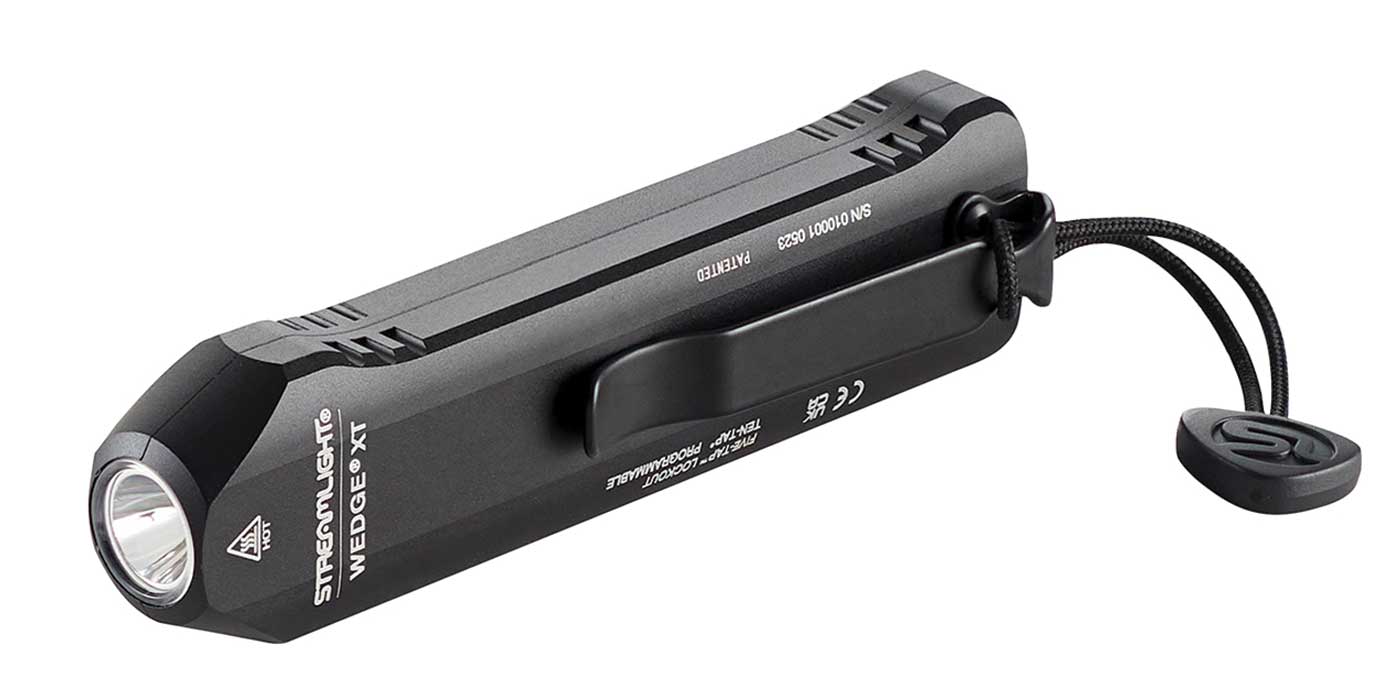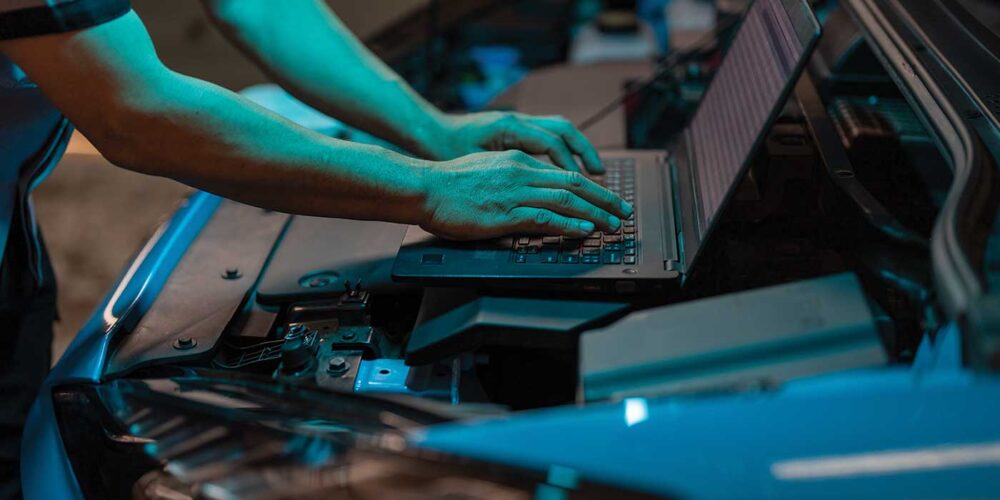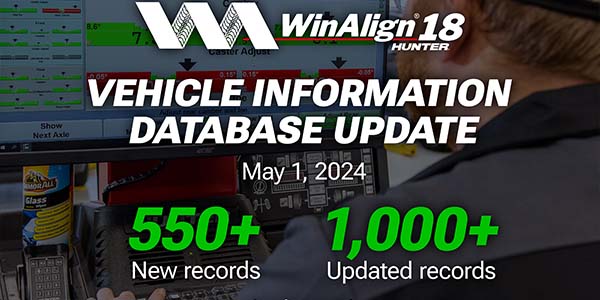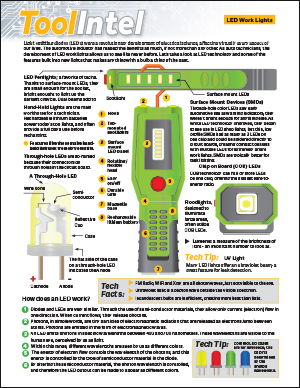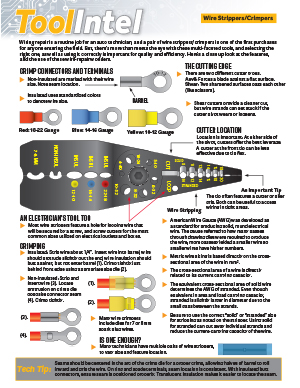By Larry Carley
Technical Editor
Like brake pads, shock absorbers and tires, chassis parts wear out and eventually have to be replaced. But before you sell any chassis replacement parts, somebody has to discover the parts are worn.
Worn chassis parts can cause a variety of symptoms, including suspension noise, rapid or uneven tire wear, or a noticeable change in the way a vehicle rides, corners, handles or steers. If a vehicle has any of these symptoms, the steering and suspension should be carefully inspected to determine the cause.
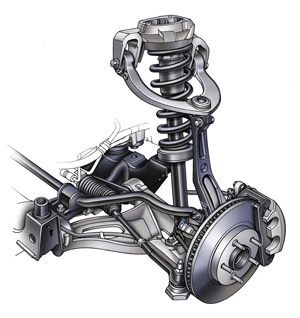 A prealignment inspection is another time when many worn or damaged chassis parts are discovered. The chassis must be inspected because worn parts cannot hold the wheels in proper alignment.
A prealignment inspection is another time when many worn or damaged chassis parts are discovered. The chassis must be inspected because worn parts cannot hold the wheels in proper alignment.
WHAT TO LOOK OUT FOR
The technician doing the inspection should be looking for things like worn tie rod ends, loose ball joints, worn or deformed control arm bushings, worn or broken stabilizer bar links, sagging springs, loose or broken steering rack mounts, power steering fluid leaks, any play or looseness in the steering, and so on. Any problems that are found may have to be corrected before the wheels can be aligned.
Worn tie rod ends can be dangerous because a failure could cause a loss of steering control. Worn tie rid ends will also cause a rapid increase in toe wear on the front tires. The steering will also feel loose, causing the vehicle to wander at highway speeds. As a rule, tie rod ends should have no visible play when the steering is rocked back and forth.
Other items that may also have to be replaced include the inner tie rod sockets on rack and pinion steering gears, the rod adjustment sleeves on recirculating ball steering gear steering linkages, and maybe even the tie rods themselves. Replacing these items can make toe adjustments easier, especially if the old parts are badly rusted or frozen.
Another chassis part which is frequently replaced is the idler arm on rear-wheel drive vehicles that don’t have rack and pinion steering. The idler arm is a pivot point that helps maintain proper toe alignment as the wheels are steered.
A center link connects the idler arm to the pitman arm on the steering box, and tie rods on both sides tie the linkage to the arms on the steering knuckles. A worn idler arm will usually cause toe wear on the tires, as well as contribute to looseness in the steering.
Ball joints are another item that can be dangerous if they are badly worn. A ball joint failure can allow the suspension to collapse and also cause a loss of steering control. If a joint has more play than specifications allow, it needs to be replaced. Also if a wear indicator on a ball joint shows the joint has reached the end of its useful service life, it needs to be replaced.
On ball joints, acceptable play varies depending on the type of joint and vehicle. There are no standard rules of thumb.
Technicians should always refer to the wear specifications in a manual, and check ball joint play using the recommended procedure. Jamming a large crowbar between the control arm and knuckle and prying with all your might is not the way to check for wear. Pry hard enough and even a new joint may show excessive wear.
If one ball joint is worn or loose, the best advice is to replace the joints on both sides of the suspension (because both have the same mileage). The same goes for worn tie rod ends.
Tire wear, chassis noise and alignment problems can also occur if the bushings that locate the control arms are cracked, deformed or worn out. The bushings serve as the pivot points for the control arms, and most are made of synthetic rubber. Excessive compliance in the bushings can increase torque steer on front-wheel drive cars and minivans.
KEEPING IT STABILIZED
If a vehicle has excessive body sway when cornering, feels unstable in heavy crosswinds, or just does not handle well, the links and bushings for the stabilizer bar may be worn or broken. The stabilizer bar ties the left and right sides of the suspension together.
Most vehicles have a front stabilizer bar, and many also have a rear bar as well. When the body rolls, the twisting motion is countered by the stiffness of the stabilizer bar. If the bushings that hold the bar are loose, or the links on the ends of the bar are worn or broken, the suspension will feel loose and the body may experience too much roll.
On applications where the vehicle owner may want to improve handling, installing a larger diameter or stiffer aftermarket sway bar can make a noticeable improvement in cornering agility — without affecting ride harshness.
Springs are another item that are often overlooked but affect both wheel alignment and ride quality. Weak, sagging springs may allow the suspension to bottom out over bumps. Spring sag isn’t always obvious, so ride height needs to be measured to see if it is still within specifications. An inch or more of sag can place the chassis at or below its minimum ride height specifications, and cause undesirable changes in wheel alignment.
Springs may also need to be replaced to upgrade the suspension, too. If a vehicle is used for towing or hauling heavy loads, it might benefit from stiffer, stronger springs, or variable-rate springs. Any vehicle with a trailer hitch is a potential candidate for stronger replacement springs. A minivan is another vehicle that can often benefit from spring upgrades, typically variable-rate springs that don’t make the ride any stiffer, but increase the cargo carrying capacity for weekend projects.
HOW WORN CHASSIS PARTS AFFECT TIRE WEAR AND FUEL ECONOMY
When chassis parts such as tie rod ends, control arm bushings and ball joints are worn, it causes undesirable changes in wheel alignment that can increase tire wear dramatically and also reduce fuel economy. With gas selling for more than $3.50 a gallon in many parts of the country, who wants to waste gas?
Worn tie rod ends typically change toe alignment of the front wheels. Toe refers to the parallelism of the wheels. Both should point straight ahead when the chassis is properly aligned. This minimizes rolling resistance, which affects both fuel economy and tire wear.
Even a small amount of toe misalignment, say only 1/8th-inch, can increases the sideways scrub the tires experience as the roll along, causing them to wear much faster than normal. Only 1/8th-inch of toe misalignment will drag the tires sideways the equivalent of 28 feet for every mile traveled. The greater the misalignment, the greater the scrubbing and the faster the tires wear. Tires that might normally go 70,000 to 80,000 miles before they need to be replaced might be worn out in half that mileage if the toe rod ends are loose.
As a rule, all tires should wear evenly across the full face of the tread when wheel alignment is within specifications, the tires are maintained at the recommended inflation pressure, and the vehicle is driven sensibly.
Heavy outer shoulder wear on the front tires and/or a feathered wear pattern across the tread are classic symptoms of toe misalignment caused by worn tie rod ends. But camber misalignment can also cause shoulder wear on front or rear tires.
Camber is the vertical alignment or tilt of the wheels. Camber is measured in degrees from the vertical axis, and should usually be within a couple degrees of zero (perpendicular to the road). If camber differs more than about half a degree from one side to the other, it can cause the steering to pull to one side.
Underlying causes of camber misalignment include things like bent struts, misaligned strut towers (structural misalignment in the body), bent spindles, bad control arm bushings, and/or even weak springs.



